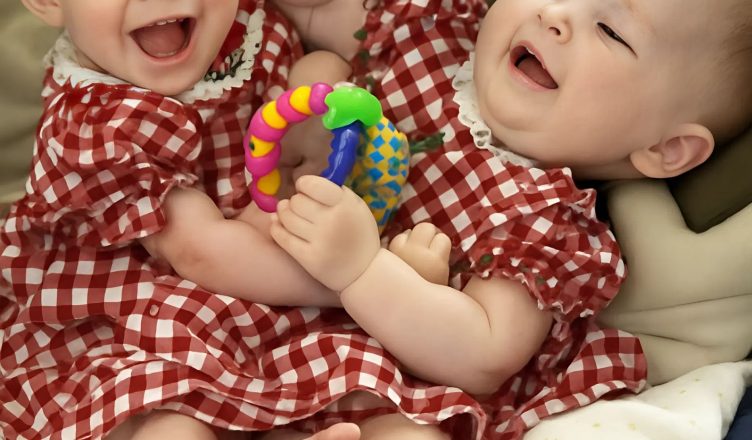In the history of medicine, there are stories so powerful that they remain engraved in memory for decades. One of the most unforgettable began in the year 2000, when twin girls were born conjoined from chest to pelvis. Their bodies were distinct, yet their internal organs were shared. From the very beginning, doctors knew their lives were hanging by a thread. Every passing day was a gamble, every breath a miracle.
When the girls were only seven months old, a decision was made that would change their fate forever. Doctors chose to attempt a separation. At the time, such surgeries were extremely rare, often ending in tragedy. The risk was enormous: both girls could be lost in a single moment. But the medical team knew that without this intervention, the sisters had little chance of survival.
31 Hours Under the Knife
The surgery began in the early morning and continued for more than a full day — an incredible 31 hours. Teams of surgeons and nurses rotated in and out, working with breathtaking precision. Every cut of the scalpel demanded perfection, as a single mistake could take two young lives.
First, the surgeons worked to separate bone structures, then moved on to the delicate process of dividing blood vessels, nerves, and organs. The most difficult challenge was the heart and liver. These vital organs were intertwined, and distributing them fairly between the two infants was nothing short of a miracle of surgical planning.
Pieces of tissue had to be reconstructed, and experimental techniques were used to ensure that each twin would have a chance at survival.
Finally, after more than a day of relentless effort, the surgery was over. Both girls survived. The medical world erupted in awe — this was a triumph of modern science, proof that even the most impossible challenges could be met.
Life After Separation
The operation was only the beginning. What followed were long, grueling years of rehabilitation. The sisters had to learn how to sit, walk, and balance as individuals. Dozens of follow-up surgeries were required, along with physical therapy and constant medical supervision.
Their childhood was far from ordinary. Pain, scars, and endless hospital visits became part of daily life. And yet, against all odds, the girls grew stronger. Their parents fought to give them as normal a life as possible.

They went to school, where at first they faced whispers and curious stares. But over time, they won the hearts of classmates and teachers alike. They weren’t defined by their past — they were bright, resilient children who refused to be broken.
25 Years Later: An Unexpected Twist
Today, the twins are 25 years old. And the news that recently spread through the media shocked and inspired millions: one of the sisters became a mother.
Her pregnancy was monitored with the utmost care. Doctors watched every step, knowing the challenges her body had endured. Still, the unthinkable happened again — she gave birth to a healthy baby.
The sisters are now living full, independent lives. One pursued a career in education, the other in healthcare, determined to help patients going through their own battles. They often speak at conferences, sharing their story as a beacon of hope for families facing impossible odds.
How Do They Look Now?
Recent photographs of the twins astonish those who remember their early years. They are radiant, confident young women. Beautiful smiles, graceful figures, and only faint scars remind the world of the extraordinary surgery that once defined them.
People who see them today often ask: How did they endure all of this and remain so strong? The sisters have a simple answer: “We live for those who believed in us back then, and for those who need hope today.”
A Symbol of Human Strength
This is not just a medical story — it is a human one. These sisters became a symbol of resilience, proof that miracles can happen when courage, science, and faith come together.
Twenty-five years ago, the world held its breath, waiting to see if they would survive a 31-hour operation. Today, the world admires them as women who not only survived but thrived, embracing life, motherhood, and purpose.
Their journey is a reminder: even the greatest struggles can lead to extraordinary triumphs. And sometimes, the most remarkable miracles are not written in medical textbooks but in the hearts of those who refuse to give up.
